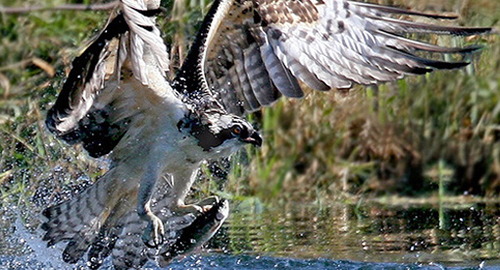NH Audubon biologists have been involved in monitoring and management of Ospreys in New Hampshire since 1980. Working in close partnership with the NH Fish & Game Nongame Program, our staff has taken many pro-active steps to hasten recovery of a population once decimated by DDT. Over the years, our management priorities have grown to include documenting nesting locations, determining annual productivity, installing predator guards to improve nesting success, building nesting platforms to attract pairs to new areas, and working with land owners and utility companies to effectively manage the expanding population.

Over the past 30 years, the Granite State’s Osprey population has truly blossomed, growing from just three active nests and ZERO young in 1980 to close to 70 breeding pairs and nearly 90 young produced in 2010. A population that nested only in one watershed in northern New Hampshire during the 1980s now breeds successfully in four of the state’s five major watersheds spanning aquatic habitats from Pittsburg to Hinsdale to Seabrook.
The Osprey was removed from New Hampshire’s Threatened and Endangered Wildlife List in September 2008, becoming one of the first species ever removed from that list as a result of recovery. NH Audubon’s conservation biologists continue to provide expert assistance to power companies and cell tower operators and to researchers studying Osprey migration and contaminant burden. Volunteers can learn more about becoming involved in our on-going work with Ospreys by contacting raptor specialist Chris Martin in the Conservation Department.
Project Leader: Chris Martin

